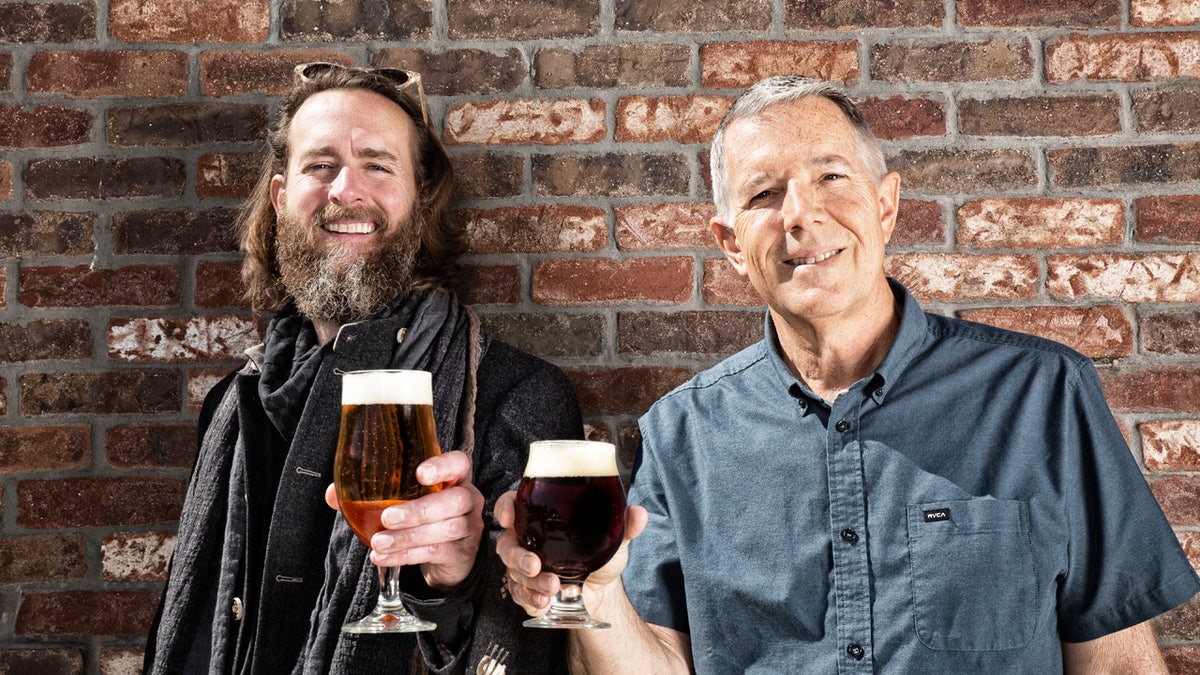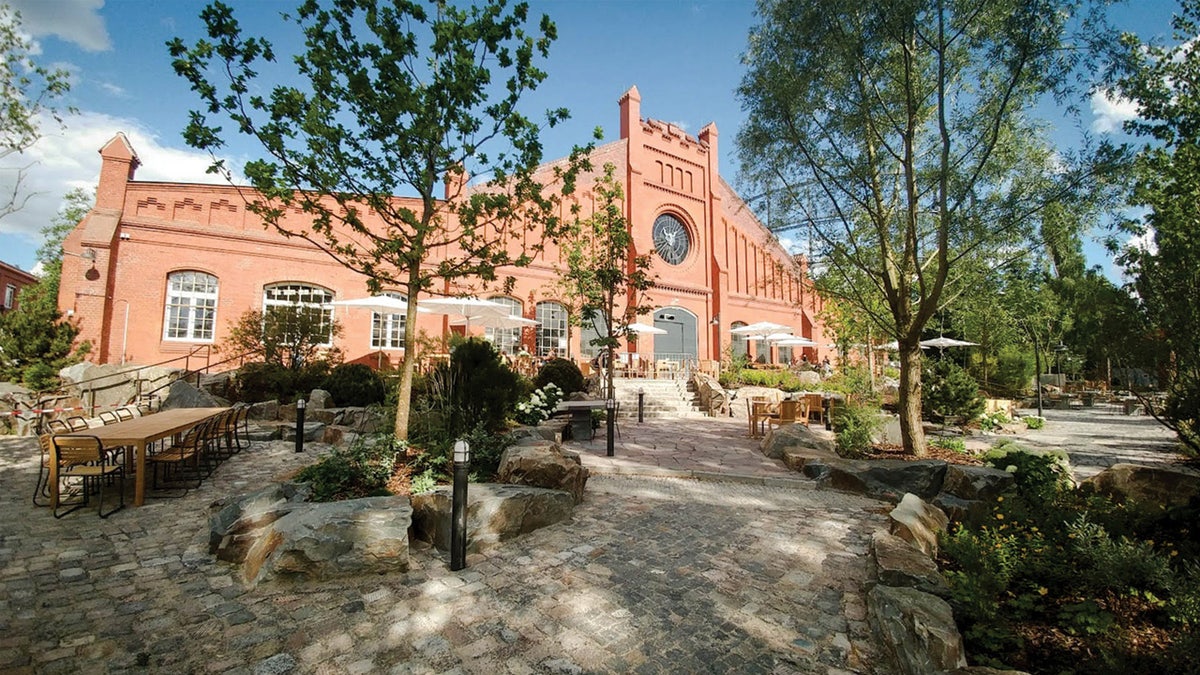
Cheers: Stone co-founders celebrate 20 years in business with ambitious plans for future growth. (Courtesy Stone Brewing)
“Ambitious,” “bold” and “collaborative” are three words often used to describe Stone Brewing’s signature hoppy beers and marketing (see its Arrogant Bastard line). But those words are also apropos for the craft beer maker’s approach to creating its brews and expanding its business as it celebrates two decades of making beer.
Stone has grown from brewing 400 barrels to 325,000 in that time, and it has created more than 30 national collaboration releases with other brewers along the way. The brewery celebrated its 20th anniversary with a blowout beer festival Friday and Saturday at California State University San Marcos, with food, music and lots of fresh and rare beer. In keeping with the collaborative spirit, 100 beers from more than 60 breweries were served alongside special Stone brews. All the proceeds from the event are now going to charity.

The company recently opened a beer brewing facility in Berlin, Germany. (Courtesy Stone Brewing)
“We’re not afraid to express our own personality,” Stone co-founder and CEO Greg Koch told FoxNews.com. “We have a three-legged stool of not being afraid to push things forward that we believe in, at being skilled at what we do, and having just solid fundamental business practices: paying taxes, payroll, the basics.”
Those ideals have propelled Stone from pipe dream to the nation’s 10th largest craft brewer, with breweries on both coasts, the first independently owned and operated American craft brewery in Europe, an outpost under construction in the heart of California wine country and just-released designs for a beer hotel near its headquarters in Escondido, Calif. It will boost its U.S. production by nearly a third when its brewery in Richmond, Va., is fully operational.
Koch says the expansion enables the brewery to keep producing fresh beer that’s brewed under its own watchful eyes, rather than being contracted out. “It’s always been our policy to brew our beer ourselves and have control, to reduce the costs of shipping, the time factor of shipping and the carbon footprint of shipping,” he said.
Having a regional presence also keeps you top of mind, and on tap, in an increasingly competitive beer marketplace in which rivals like Sierra Nevada and New Belgium have opened breweries on the East Coast.
Julia Herz, craft beer program director at the Brewers Association, says Stone’s success is a result of staying true to its mission.
“The Stone Brewing Company is really about what’s in the glass,” she said. “Freshness is the key to what they’re doing.”
She added that Stone is a model brewery in terms of advancing production, distribution and diversification, and she called out Stone’s retail outposts, its bistros in California, Richmond and Berlin, its hot sauces and the hotel, which she says creates a tourism destination.
A Recipe for Success
Koch, 52, said he had no designs on expanding beyond Escondido, much less going global, when he and Steve Wagner started the brewery in the mid-1990s. “I didn’t think it was a ghost of a possibility,” he said, recalling that Stone was around the 850th craft brewer to set up shop in the U.S.
“I honestly believed we were starting too late to ever make a mark. It was our passion to be a part of the craft brewing revolution.”
But clearly the revolution has grown and lasted longer than he and many others imagined.
In the last five years alone, according to the Brewers Association, the number of beer makers in the U.S. doubled to 4,269, the most ever. There are more than 500 breweries in California alone.
Given this rapid rise, Koch said, he would advise against opening up a new craft brewery.
“I would counsel someone not to get into the business today … Boom times are historically not a good time to start a business.
“Right now we’re in a boom time. If you’re able to pull back and look at this soberly, you can see the patterns in just about everything. When do you want to buy real estate, in a boom time? Of course not, you want to buy in a lean time.”
But Herz disagrees. She said most of the growth is among microbreweries serving a small area, and she asserted that the nation can digest more beer makers. “It’s not guaranteed that growth will continue, [but] a lot less people lived in this country in 1873 (the prior record for breweries),” she said.
“If you had the same number of breweries per person, we could support more than 30,000. I call it Craft Beer 3.0. The big boys (mega-brewers) want in and are presenting their brands as craft beer and buying up craft brewers.”
Indeed, as craft beers have gained in popularity, international beer companies like Anheuser-Busch InBev, Heineken and SABMiller have been taking large stakes in regional breweries or buying them outright.
Koch is not a fan of this trend, and Stone and VMG Partners are collaborating on a $100 million True Craft Initiative to help brewers remain independent. “It’s focused on minority investments into established craft brewers,” Koch said.
“It’s not a vehicle for startups. We’re focused on brewers making 25,000 barrels or more.”
Koch has announced he’s stepping down as CEO, and Stone is searching for his successor. But he plans to remain involved.
“It’s innovate or die, that’s the way of the world,” he said. “You can only rest on your laurels so much. We love our craft and the creativity of it. Innovation is just a natural part of who we are.”
